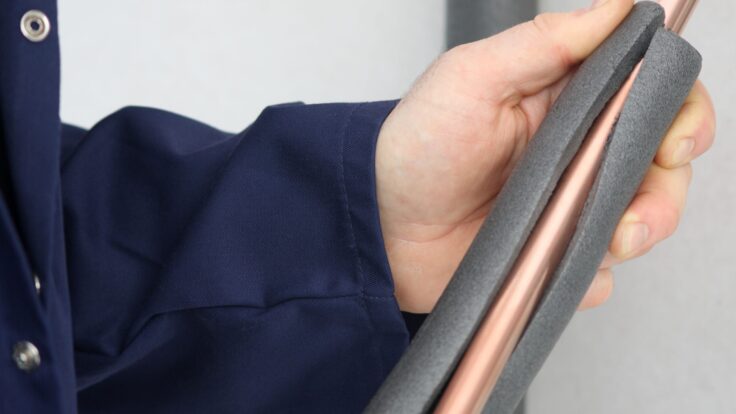Pipeline Insulation


Industrial pipe lines used in heating and cooling require pipe insulation for cost-effective use. To ensure that the hot and cold sharing area remains within the pipes, the upper parts of the pipes are covered with insulation material and regular maintenance is carried out. İzo Teknik carries out these necessary procedures for safety and efficiency in a project-oriented manner, with the help of experts.
Pipe Insulation According to Pipe Sizes
Isolating the pipes coming from boilers in industrial facilities is crucial for environmental health to prevent energy loss. The insulation system is designed to ensure that the substances passing through the pipes have a long-lasting effect without experiencing heat loss.
The insulation process according to the pipe diameter requires a tight wrapping of the pipe’s circumference and axis sections. The on-site survey team will measure the lengths and diameters of the pipes in the industrial area to complete the insulation process. Special rubber and mineral wool will be used to prevent temperature imbalances inside and outside the pipe. The insulation process may vary depending on the type of pipe and industrial material. Pipe insulation requires a large team to work on it.
Insulation Materials Used for Pipe Insulation
The materials used in pipe insulation systems vary depending on the temperature. Generally, prefabricated rubber foam is used, while rock wool and glass wool are preferred materials in industrial areas. Rock wool and glass wool are commonly preferred to enhance thermal insulation. Rubber insulation is more necessary for cooling systems. White glass wool, rock wool, and phenolic foam materials are also used, and experts can change the insulation material according to the type of pipe and heat value.
Among the effective materials that provide resistance in insulation materials are glass wool and rock wool. Hard plastic foams and polystyrene foams can also be considered suitable for providing flexibility. In cases where thermal insulation is needed in the installation, rock wool is the first choice of material. Soft foams and elastomeric rubber foam are also among the materials used in the insulation process.
How Long Does Pipe Insulation Last?
The preferred material for pipe insulation systems is rock wool, considering its thickness and fluid temperature. The area of use for glass wool, ceramic wool, and aerogel insulation materials is also crucial. Materials specifically used for insulation of +1000 degrees pipes and tanks should be regularly maintained. Ensuring thermal insulation with valuable equipment leads to long-term effective cost savings. Depending on the size of the material used, it provides a lifetime of use and reduces fuel costs by at least 25%. These systems only require replacement of worn-out areas if regularly maintained, resulting in cost savings.
Sheet Cladding in Insulation
As an external cladding system, sheet cladding is placed over rock wool, glass wool, or rubber flex materials used in both tank insulation and pipe insulation systems. During insulation, it prevents heat from coming into contact with the outside and provides a measure against potential leaks. The material wrapped around the pipe along with the insulation materials also ensures insulation by being placed on industrial tanks.
Materials with high resistance to temperatures of 1000+ degrees are designed by experts according to hot oil or cold substance transfers. Aluminum is used to prevent heat transfer of the substance on the pipe. It will protect the insulation sleeve and insulation system from moisture as well.






